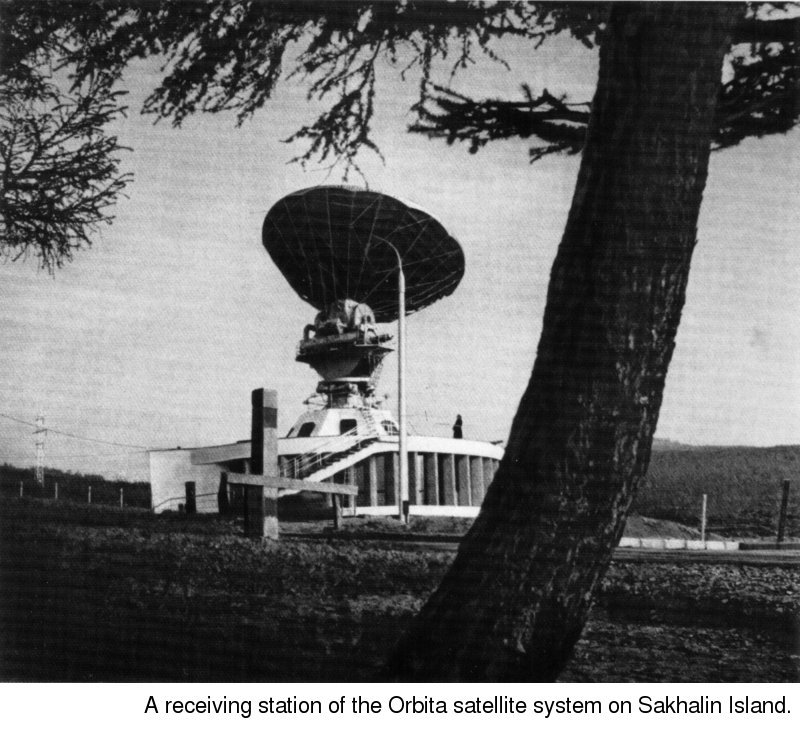"Roll, apple, roll, around a silver saucer, show me forests and mountains, rivers and seas . . ."
There is good reason to recall this beginning of an old Russian fairy-tale. TV programs are now being channeled through the Molniya (Lightning) satellite. If we compare this celestial body to the fairy-tale apple, the ground system of the new Orbita TV network would be the saucer. These weird structures erected in remote parts of the country do indeed resemble silvery saucers. This photograph was taken on Sakhalin Island. Similar saucers have been erected in Khabarovsk, Magadan, Komsomolsk-on-Amur, Irkutsk, Bratsk, Ashkhabad, Novosibirsk and Yakutsk.

Since the short waves of a TV station are beamed along straight lines, the Earth's curvature makes the reception of a program originating in Moscow difficult in nearby Ryazan, no matter how high the transmitter is located. A solution of sorts has been found for the densely-populated European part of the country, where relay lines have been set up. These tall towers topped by saucers relay programs to and from Moscow, Kiev and Tbilisi. Thus, the problem of long-distance transmission has been solved for this part of the country. Now imagine what a job it would be to set up relay towers all the way to Magadan in Siberia! That is when the silvery saucers appeared.
The new system works like this: Moscow transmits and the sputnik picks up the signals and transmits them back to Earth again from its great height. Now people all over Siberia, in the Far East of the Soviet Union and in the Central Asian Republics can watch any program originating in Moscow.
We soon get accustomed to anything. Still, is it not a miracle that people living thousands of miles away can watch a performance at the Bolshoi Theater in Moscow together with the audience in the theater? Is it not natural to recall the words of the old fairy-tale: "Roll, apple, roll, around a silver saucer, show me forests and mountains, rivers and seas", a fairy-tale that actually predicted the future?
